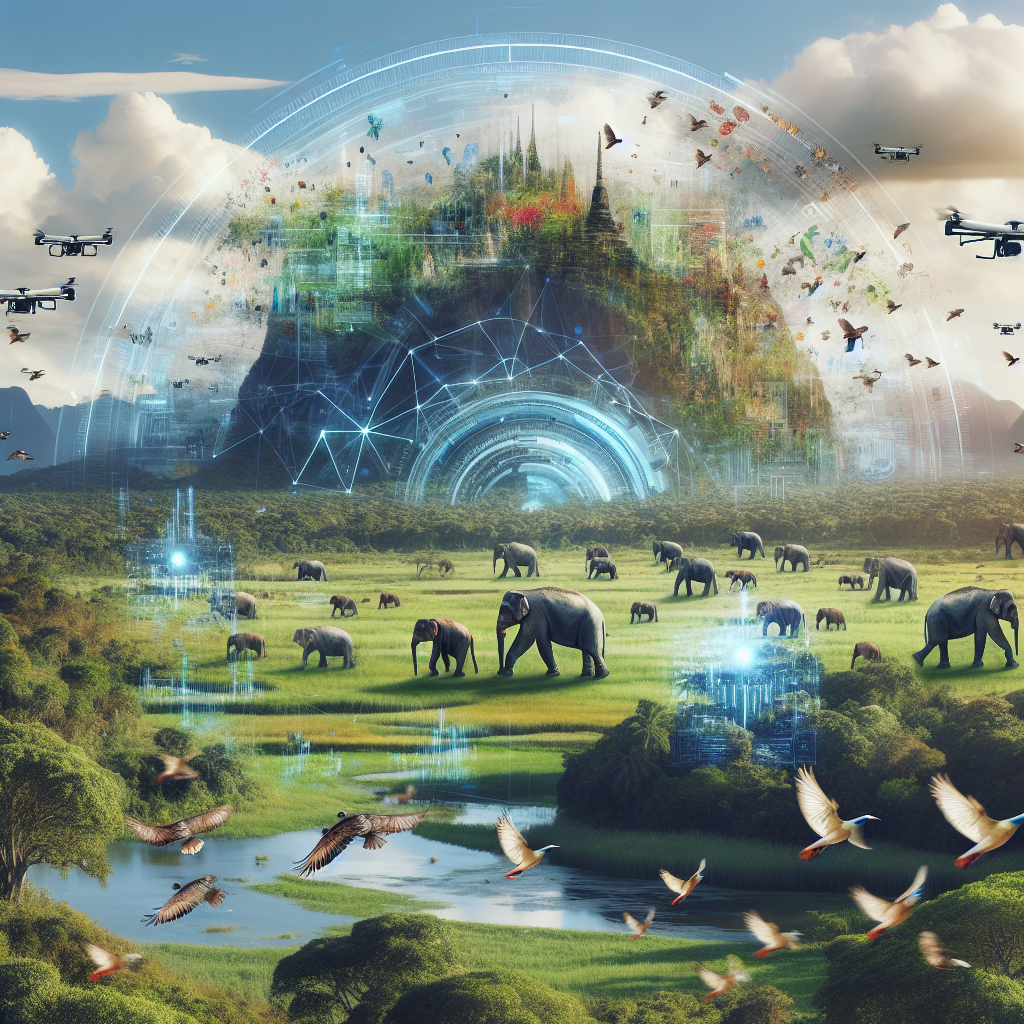Artificial intelligence (AI) is revolutionizing many industries, and wildlife conservation is no exception. With the help of AI technology, conservationists are able to track and protect endangered species, monitor habitats, and combat poaching more effectively than ever before. In this article, we will explore the various ways in which AI is being used in wildlife conservation, as well as the potential benefits and challenges of this technology.
One of the most common uses of AI in wildlife conservation is in the tracking and monitoring of animals. Traditional methods of tracking animals, such as radio collaring or satellite tagging, can be expensive and time-consuming. AI technology, however, allows conservationists to track animals using non-invasive methods, such as camera traps and drones. These devices can capture images and videos of animals in their natural habitats, which can then be analyzed using AI algorithms to identify individual animals, track their movements, and monitor their populations. This information is crucial for conservation efforts, as it helps researchers understand the behavior and habitat preferences of different species, and can inform decisions about how best to protect them.
AI is also being used to monitor and protect habitats. Conservationists can use satellite imagery and other remote sensing technologies, combined with AI algorithms, to analyze changes in land use and vegetation cover over time. This information can help identify areas that are at risk of deforestation, habitat loss, or other threats, allowing conservationists to take action to protect these areas before it’s too late. In addition, AI can be used to predict the impact of climate change on habitats and species, helping conservationists develop strategies to mitigate these effects.
Another important application of AI in wildlife conservation is in the fight against poaching. Poaching is a major threat to many endangered species, and traditional anti-poaching efforts can be difficult to implement and often ineffective. AI technology, however, is helping to change that. Conservationists are using AI algorithms to analyze data from camera traps, drones, and other surveillance devices to identify and track poachers in real-time. This information can be used to alert law enforcement agencies, enabling them to respond quickly and effectively to poaching incidents. In addition, AI can be used to analyze patterns in poaching activity, helping conservationists identify hotspots and develop targeted strategies to combat poaching in these areas.
While the use of AI in wildlife conservation offers many benefits, there are also challenges and limitations to consider. One of the main challenges is the cost of implementing AI technology. Developing and deploying AI algorithms, acquiring and maintaining the necessary hardware and software, and training staff to use the technology can be expensive. In addition, AI technology is not a one-size-fits-all solution – different species and habitats may require different approaches, and it can be difficult to adapt AI algorithms to different contexts.
Another challenge is the potential for bias in AI algorithms. AI systems are only as good as the data they are trained on, and if this data is biased or incomplete, the algorithms may produce inaccurate or unfair results. This is a particularly important concern in wildlife conservation, where decisions based on AI analysis can have real-world consequences for endangered species and ecosystems. Conservationists must be vigilant in ensuring that the data used to train AI algorithms is accurate, representative, and unbiased, and that the algorithms themselves are transparent and accountable.
Despite these challenges, the use of AI in wildlife conservation holds great promise for the future of conservation efforts. By harnessing the power of AI technology, conservationists are able to collect and analyze vast amounts of data more efficiently and accurately than ever before, enabling them to make more informed decisions and take more effective action to protect endangered species and habitats. As AI technology continues to advance, it is likely that its applications in wildlife conservation will only grow, offering new opportunities to safeguard the natural world for future generations.
FAQs:
Q: How is AI used to track animals in the wild?
A: AI technology is used to analyze images and videos captured by camera traps and drones, allowing conservationists to identify individual animals, track their movements, and monitor their populations.
Q: How is AI used to monitor habitats?
A: AI algorithms are used to analyze satellite imagery and other remote sensing data to identify changes in land use and vegetation cover, helping conservationists protect habitats from threats like deforestation and climate change.
Q: How is AI used to combat poaching?
A: AI technology is used to analyze data from surveillance devices to identify and track poachers in real-time, enabling law enforcement agencies to respond quickly and effectively to poaching incidents.
Q: What are some of the challenges of using AI in wildlife conservation?
A: Some of the challenges include the cost of implementing AI technology, the potential for bias in AI algorithms, and the need to ensure that data used to train AI algorithms is accurate and unbiased.

